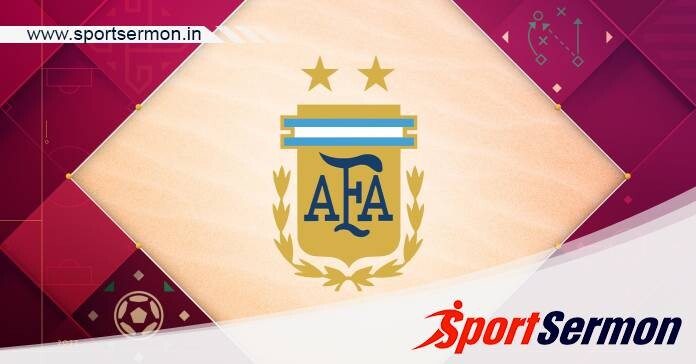In addition, Argentina has won three World Cups, ranking them fourth in terms of national success (after Brazil, Italy, and Germany). Their two greatest periods were from 2014 to the present (winning the Copa América in 2021, finishing second in 2014, and winning the World Cup in 1978 and 1986). While other football players are included, this list gives special recognition to those who made a major contribution throughout these times. You can assess and contrast their skills with the use of the provided videos and data. Find the list of The Top 10 Argentina Players of All Time below.
The Top 10 Argentina Players of All Time
Ángel Di María
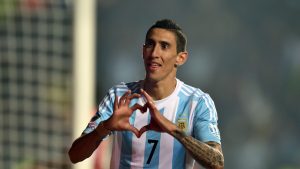
If we take into account Ángel Di María’s accomplishments for both club and country, his nomination is not controversial. Dubbed “noodle” (or “Fideo” in Spanish) due to his little build, Di María blends athletic qualities like speed and endurance with technical skills like dribbling, passing, and creativity.
Before spending three seasons with Benfica and five with Real Madrid—winning a league title, two domestic cups, and the 2014 Champions League with the latter—Di María started his career at Rosario Central. He spent a season at Manchester United before joining Paris Saint-Germain, where he went on to win seven league titles and nine domestic cups.He moved to Juventus for a year before coming back to Benfica in 2023. Di María scored the game-winning goal in the final to win the 2021 Copa América on the international scene. After that, he scored in the World Cup final to win it all in 2022.
Javier Zanetti
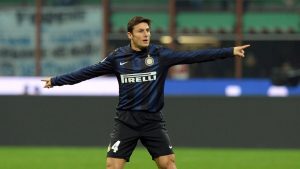
One of the most all-around football players ever was Javier Zanetti (see the video). With his combination of speed, strength, and endurance, as well as his dribbling abilities, passing, and goal-scoring sense, he could play anywhere in midfield or defense. The position he played right-back the most.
Before playing 19 seasons and amassing 858 appearances for Inter Milan (a club record), Zanetti played a few seasons in Argentina with Talleres and Banfield. There, he took home 16 trophies, including 5 league titles, 4 domestic cups, the 2010 Champions League, and the 1998 UEFA Cup (Europa League). Zanetti was not a successful player during this period on the international scene. He has placed second in multiple competitions, including the Copa América in 2004 and 2007. However, he was never able to go past the quarterfinals in the World Cup.
Omar Sívori
In “Maradona of the Sixties” Omar Sívori was equally volatile. In addition, he had amazing finishing, pace, inventiveness, and dribbling abilities (particularly the “nutmeg” dribble). These qualities helped him win the 1961 Ballon d’Or.
Sívori started with River Plate and in three seasons, he won three league titles. Following his move to Italy, he played for Juventus for eight seasons, winning three league titles, three domestic cups, and 168 goals. He played four seasons with Napoli before retiring. Sívori’s career abroad was not as prosperous. Due to his affiliation with an Italian club, he was not permitted to compete in the 1958 World Cup despite making 19 appearances for Argentina. Eventually, Sívori signed up to represent Italy, but he only played in the ill-fated 1962 competition.
Ubalde Fillol
Ubalde Fillol, also known as “the Duck” (or “el Pato” in Spanish), was Argentina’s goalkeeper during the 1978 World Cup. He was included in the tournament’s “All-Star Team”. He was named Argentina’s “Footballer of the Year” the previous year, and most people agree that he is the best goalie the country has ever produced.
In addition to spending seasons with Flamengo (Brazil) and Atlético Madrid (Spain), Fillol played for several clubs in Argentina. But his ten years with River Plate, where he won seven league championships, are what made him most famous. Three World Cups were attended by Fillol (1974, 1978, and 1982). Throughout the 1978 campaign, he let up four goals in seven games. Throughout his career, Fillol was renowned for his ability to stop penalties and make spectacular saves.
Gabriel Batistuta

One of the best attackers that is sometimes overlooked is Gabriel Batistuta. He had a fierce and precise shooting, making him the Harry Kane of his era. Nicknamed “Batigol,” he was a record scorer and domestic cup winner for Fiorentina during his greatest years. His stature, strength, and will make playing Italian football simple. Batistuta started his professional career in Argentina with Marcelo Bielsa’s Newell’s Old Boys. With Roma and a short stint in Qatar, he called it quits. He ultimately took home the Italian league title with Roma.
At the international level, Lionel Messi eventually overtook Batistuta as Argentina’s all-time leading scorer. He won the Copa América in 1991 and 1993. His best World Cup performance came in a quarterfinal in 1998, despite his ten goals.
Daniel Passarella
Daniel Passarella, who missed out on playing in 1986 due to sickness, is the only Argentine to have been in two World Cup-winning squads. “El Gran Capitan” led the squad and was a member of the All-Star Team in 1978. After Ronald Koeman, Passarella is the second-highest-scoring defender in history. Like Koeman, he was a master at taking free kicks. He was strong in the air and scored with headers despite only standing 1.73 m (5 ft 8 in) tall.
Before joining River Plate and winning seven league titles in eight seasons, Passarella started his club career with Sarmiento. His later years were spent in Italy (two years with Inter Milan and four at Fiorentina).
Mario Kempes
Mario Kempes was most likely the inspiration behind Batistuta’s heavy-metal hairstyle. Kempes scored twice in the championship match to win the Golden Ball (best player) and Golden Boot (highest scorer) for Argentina in the 1978 World Cup. That year, he also took home the Ballon d’Or. Before playing his greatest years in Spain with Valencia, when he won a domestic cup and the European Cup Winners Cup in 1980, Kempes started his career with Instituto and Rosario Central. In his later years, he lived in Austria, Chile, and Indonesia. He also played for River Plate, where he won a league championship.
Kempes scored 149 goals in 246 games for Valencia, making him a productive goalscorer. He put in a lot of work and frequently dropped into midfield to advance the play. He created openings and confused defenders with his combination of strength, technique, and movement.
Alfredo Di Stéfano
The legendary Alfredo Di Stéfano of Real Madrid won eight Spanish championships, a domestic cup, and the European Cup five times in a row (1956–1960), scoring in every final. He is recognized as one of the all-time best players and was the 1957 and 1959 Ballon d’Or winner. Di Stéfano started out with River Plate and was a two-time league champion. He later relocated to Millonarios, Colombia, where he won a local cup as well as three league titles.
Di Stéfano’s international career was ended by different conflicts, even though he scored six goals in six games for Argentina. He enrolled for Spain (after obtaining citizenship) after being desperate to participate, but he was unable to make it to the 1958 World Cup. Di Stéfano assisted Spain in qualifying in 1962, but an injury occurred when he was almost thirty-six years old.
Diego Maradona
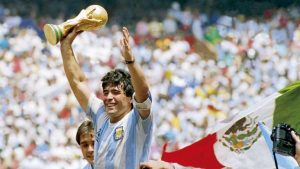
Most people consider Diego Maradona to be one of the best players of all time. Less so were his vision, originality, and passing. He nearly single-handedly won the 1986 World Cup, producing one of the most memorable goals in history, and he was twice awarded the Ballon d’Or. Maradona was dismissed from the 1982 World Cup as it was deemed that he was too young to compete in the 1978 World Cup, which Argentina won. He made it to the final in 1990, but Germany won.
Maradona spent five years at Argentinos Juniors before spending a year (and winning the league) at Boca Juniors. After two seasons in Spain with Barcelona, he won a domestic cup. During his prime, Maradona was a player for Napoli. He won two league titles, a domestic cup, and the UEFA Cup (Europa League). He just misses out on our list of The Top 10 Argentina Players of All Time.
Lionel Messi
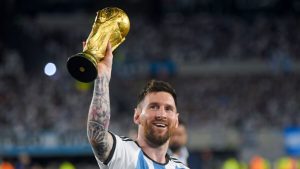
Lionel Messi, who is currently at Inter Miami, was an Argentine club’s young prodigy at Newell’s Old Boys. At the age of 13, he was signed by Barcelona, and at 17, he made his debut. He went on to win four Champions Leagues in Spain, seven domestic cups, and ten league titles.
Messi’s extraordinary goal scoring has earned him seven Ballon d’Or awards (a record), including more than 40 goals in ten consecutive seasons, over 800 goals in his career, over 100 goals for Argentina, and 13 World Cup goals (national records). He took home the World Cup 2022 and the Copa América 2021. The only player to have won the Golden Ball twice (in 2014 and 2022, for the best World Cup player) is him. Along with his quickness of foot and acceleration, Messi is renowned for his ability to dribble past multiple defenders and score goals. In addition to receiving amazing free kicks, he can find teammates in need of assistance and weave through the strongest defenses. He tops our list of The Top 10 Argentina Players of All Time.
For more football features, click here

